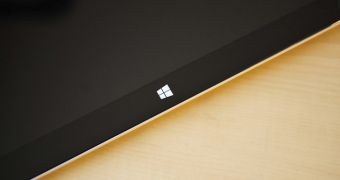Microsoft has poured millions into the Surface brand, trying to make its tablets more successful ever since the first model came out in October 2012, but the company is reportedly planning some pretty big changes for its hardware business.
Well-known leaker @evleaks recently rolled out some tidbits that impressed pretty much everyone keeping an eye on Microsoft's efforts in the hardware industry, suggesting that the software giant might replace the Surface brand with Lumia.
Microsoft completed the Nokia takeover earlier this year, so the company is planning to use its assets to better monetize its products, including the Surface models which are still said to sell below expectations.
Although such speculation makes sense at some level, we're pretty sure that this isn't going to happen, especially because Microsoft wants to continue expanding the Surface lineup with new models and is aggressively promoting its existing versions in key markets across the world.
The Lumia brand, however, could help the company merge the smartphone and the tablet industries, as some people close to the matter indicated that Microsoft might be planning to develop just a single platform powering both of these industries.
The Threshold release, which could take place in early 2015 and represent the new Windows 9 operating system, is supposedly the platform which would merge the two platforms and come with a single app store empowering all users who buy Windows Phone or Windows RT devices.
Such rumors have already been making the rounds for one year or so, with people close to the matter pointing out that the universal app concept, which Microsoft introduced at BUILD 2014, would be the core of everything. Apps designed for smartphones are also working on tablets and vice-versa, which helps Microsoft tackle a wider array of customers.
The Lumia brand, on the other hand, could help the software giant relaunch its tablet business, as the company is still losing money for every device it sells. The company already lost approximately $1.2 billion (€900 million) on its Surface tablet business, with a Q1 filing with the US Security Exchange Commission earlier this year pointing to a loss of $45 million (€33 million) for the tablet unit.
Microsoft is obviously refusing to comment on such speculation, but the company has reiterated support for the Surface brand with basically every single occasion, explaining that its tablet business is here to stay and would be significantly improved in the future.
“The worldwide customer response to both Surface RT with Windows RT and Surface Pro with Windows 8 Pro has been exciting to see,” Panos Panay, the man in charge with the Surface division at Microsoft, said in early 2013 after launching the first two tablet models.
“The enthusiasm for Surface has been fantastic, and we love hearing the stories of people who are making it the one device they use to work and play. This is what Surface was designed to do – simplify your life while letting you do more!”
Microsoft is believed to be working to expand the Surface family already and, after the launch of the Surface Pro 3 tablet, the company is focusing on a smaller unit that could hit the market with an 8-inch screen. The Surface Mini was expected to be launched on May 20, but CEO Satya Nadella decided to postpone the launch at the very last minute.

 14 DAY TRIAL //
14 DAY TRIAL //